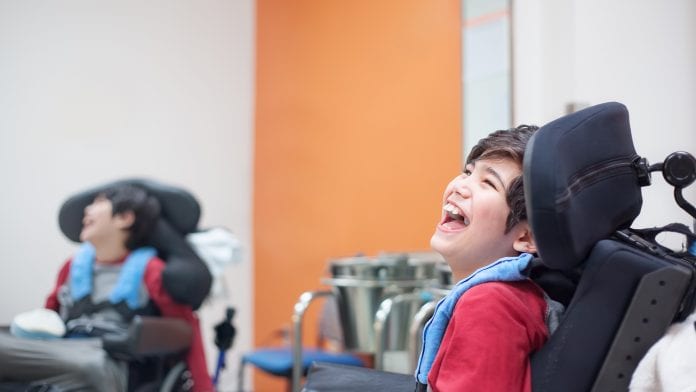
Health Europa Quarterly speaks with EURORDIS Public Health Policy Director Anna Kole about the current landscape of rare diseases in Europe.
The European Organisation for Rare Diseases (EURORDIS) is a non-profit alliance amplifying patient voices and driving research and policy within Europe’s rare disease sector. Health Europa Quarterly speaks with EURORDIS Public Health Policy Director Anna Kole about the current rare disease landscape in Europe and the need to raise awareness of rare diseases at both the clinical and health policy levels.
What are the key challenges currently facing the management and treatment of rare diseases?
Rare diseases have come a long way in the last 20 years, but unfortunately the key challenges that we face today are very much the same ones that we have faced for the last number of decades. Because rare diseases are rare, the first hurdle in being able to address them in any way is to have a fast and accurate diagnosis; and although this has improved for a number of rare diseases, we still have major delays. Depending which analysis you look at – EURORDIS will be doing a survey this year to get an update on the progress we have made in terms of diagnosis – we still have delays of up to seven years in the case of most rare diseases before a patient can even know what they have. Diagnosis still remains a major hurdle, but then even once a patient is diagnosed, getting to a specialist is still not a reality for the vast majority of people. Finally, in terms of treatments, there are still only 6% of rare diseases for which there is a treatment, and a tiny minority of those that are even approaching anything curative.
As we progress and are successful in some areas, that allows us to begin to identify major challenges in other areas – for example, the integration of care has always been a problem; and although we have progressed in the sense that there is now recognition that rare diseases need to be treated in a more person-centred way, rather than just looking at the medical issues or the clinical entity in and of itself, we still have a long way to go there as well. We know that people living with rare diseases, and to a greater extent their families, bear a huge burden of care; and they need as much help as possible: the health and social care systems need to integrate themselves in a better way to provide more realistic support.
The co-ordination of care among health professionals has made major strides, but it is still far from perfect: most rare diseases are multi-systemic and require multi-disciplinary care. Although we have made major strides in identifying centres of expertise across Europe which should be able to co-ordinate care, there is huge potential for improvement – we could achieve improvements in health and wellbeing, life expectancy and in many other parameters, simply by improving the co-ordination of care. In the case of cystic fibrosis, for example, life expectancy has increased dramatically in the last decade: while this is partly due to the transformative treatments which are now available, first and foremost, the standards of care have been so well-documented, well-communicated and well-implemented that we essentially achieved a critical mass of changes in the way that we co-ordinate care, which has significantly improved the rate at which patients survive with the disease.
What have been the impacts of the COVID-19 pandemic?
Our immediate challenge has always been finding how to get paid attention within the context of all the other health priorities, and all of a sudden there is this massive healthcare issue which is not even competing so much as just confounding the issues facing people with rare diseases. It is common knowledge that COVID-19 affects everyone, but first and foremost it does affect vulnerable populations: these are either older people or those with underlying conditions, including rare diseases. There are parallels between the changes everyone has had to make under COVID-19 and the issues that people were living with rare diseases deal with all the time – in terms of isolation; in terms of uncertainty around the cause of the disease; in terms of uncertainty around who has it and why, where, when; in terms of diagnosis; in terms of treatment and the uncertainty around that – these are all things that people with a rare disease live with all the time.

Living through a pandemic of an infectious disease has exacerbated the challenges that people living with rare diseases already face in a number of ways: first, it has further disrupted their care, whether in terms of diagnosis, therapy, surgery or appointments; as well as other services like rehabilitation and psychological support. All of these have been severely disrupted during the COVID-19 pandemic, either because people did not want to expose themselves to the virus during appointments, or they were told by their healthcare professionals not to come in, because those professionals were bombarded with COVID-19-related tasks. On a psychological level, COVID-19 has exacerbated the amount of caretaking that families needed to take on; and it has exacerbated the mental health issues and the feelings of isolation that people living with rare diseases already face without a looming pandemic.
In a way there has been a kind of positive spin resulting from the pandemic: it has forced people living with rare diseases to take advantage of remote medicine and online consultations. Telemedicine was already part of the infrastructure in providing care for people living with rare diseases, because experts are so scattered – it is common that an expert on your disease will not be in your town, your region or even sometimes in your country. It has already been a useful tool for people living with rare diseases, but the pandemic has forced these systems to be implemented at a larger scale. That has helped us on the advocacy front, in demonstrating how helpful telehealth technologies can actually be – not only in pandemic situations, but for other chronic conditions as well.
The other key impact of the pandemic is that, although it has shaken everyone to their core and a lot of people are more isolated than ever, there have been some messages of hope: if we can manage to get vaccines for COVID-19 so quickly, that sets a good precedent for the potential to find treatments for some rare diseases; a lot of the time this is a matter of political will or just making a good case. There has been a new paradigm shift around what I mentioned previously in terms of seeing the person, rather than the disease; there is more of a focus on human rights at the top of healthcare policymaking now, and I think maybe the pandemic has helped people recognise the importance of that.
A EURORDIS survey in early February found that patients living with a rare disease have a worse healthcare experience on average than other patients affected by chronic diseases. What are some factors affecting this? How could care for rare disease patients be improved?
This goes back to the question of awareness and diagnosis. The first hurdle is around awareness: general practitioners will not be fully aware of the 6,000 to 8,000 rare diseases that exist, and no-one would expect that that would be ever the case; but any level of awareness that rare diseases even exist can decrease delays in diagnosis, dramatically. There are a lot of efforts across Europe right now to raise awareness of rare diseases, from traditional campaigns like Rare Disease Day to the UK group Medics 4 Rare Diseases, which focuses primarily on clinical training. It is important to make sure that doctors in training are not just looking at rare diseases for their abstract appeal as unusual or rare clinical entities, but to cultivate the mindset that once they start practising, they should think outside the box. That is one of the key lessons which we drew from our consultations with patients.
The organisation of care within Europe into a hierarchy of centres of expertise within European reference networks is designed to ensure that a patient can access to the highest expertise possible, as quickly as they can. The goal is to create a healthcare pathway where you start with symptoms, you go to see one healthcare professional, and as fast as possible you make your way to the person who’s going to have the right answer – this may be a way to find a diagnosis or to apply the best standard of care for your chronic disease, or maybe to introduce you to existing treatments or cutting-edge therapies that are currently being tried and tested.
The 2019-2020 H-CARE survey essentially demonstrated the effectiveness of European reference networks. The hurdles I mentioned previously – delays to diagnosis, issues finding the experts, and being able to maintain long-term co-ordinated care – are the main reasons why the European reference network systems have been put in place. Given the limitations that we live with in terms of the availability and location of specialists, putting this network in place means that patients do not have to move between regions or even between countries, as the knowledge itself travels, rather than the patient. This survey demonstrates how, at least in terms of the patient experience, there have been major improvements not only to the patient experience, but in the quality of the care itself.
How can digital or technological solutions help with diagnosis and treatment?
Digital can encompass a lot of things, from Zoom consultations to electronic health records (EHRs). EHRs enable health systems to keep better track of people living with rare diseases, which can be beneficial not only both for individual patients and clinicians, but also from a public health stance; as they enable rare diseases to be monitored and understood on a greater scale from an epidemiological point of view.
Digital can also mean maximising the use of data in healthcare applications: Artificial Intelligence (AI) has great potential in diagnosing any disease, but it is particularly beneficial in rare diseases, where that critical mass of knowledge is more necessary. As a physician, when you see a rare disease, you need to be able to consolidate what you see with what other people are seeing elsewhere, and digital support in the form of AI can help you do that, so it definitely has a potential to speed up diagnosis. There are new investigations ongoing into how the digital world can help clinical trials, using AI to help test certain potential treatments and therapies.
Digital technology is critical to consolidate all of the information that we have: the digital revolution is going to help healthcare in all sectors, but the distinct aspect of rare diseases is that they are rare and therefore whatever data can be gathered is extremely rare and precious. We are constantly battling this fact that we cannot get a critical mass of information to fully understand how to solve the problems that we are faced with, so digitisation is a tool to help us get all of the information we need in one place.
Are there any notable developments or challenges in the world managing these diseases which you think our readers should be more aware of?
All of these streams of work – diagnosis, research, healthcare co-ordination, cutting-edge technologies – are absolutely progressing, and we have made great strides in the last 20 years across all of them. We are now at a crossroads: we have made a great deal of progress, we want to make more, and we need to take into account the new opportunities afforded by digital and technological breakthroughs. There are all sorts of advanced therapies available now which we did not have 20 years ago; and we also did not have the opportunity to digitise everything the way that we do today. From a policy standpoint, there are a lot of revisions happening right now at the European level which are absolutely critical, because no matter what breakthroughs occur, rare disease patients and experts will be scattered; and there needs to be co-ordination to make progress. That co-ordination can be facilitated by digital solutions; it can be facilitated by money; it can be facilitated with a lot of other things, but without the political will, nothing is going to change. We need this European-level impetus to make sure that everybody is working towards this common goal.
There are still limitations in Europe in terms of healthcare, so what we really need right now is a continuation of national plans and strategies that really bring all of these efforts together in a co-ordinated way. EURORDIS has been working with a massive group of experts on a foresight study, which has led us to the conclusion that we are at this crossroads and if we continue as we are, we might end up with a future situation that is not really desirable. We defined what a desirable future would look like, where the time to diagnosis is much shorter; where there is more treatment for a larger number of diseases; where care is integrated; where people are considered as people and not just their disease; where their records are electronically documented and safely shared; and we recognise that it is only through active political will and design that we will get there.

We are proposing a new policy framework: ideally, we would hope for a new European Council recommendation for rare diseases. In 2009 we had this legislation which provided a roadmap for European countries to better co-ordinate their national plans so that they were all working towards the same goal. Our challenge today is to make sure that we do not lose all the progress that we have garnered in the last 20 years. We want to make sure that rare diseases are retained as a priority; and we want to renew this roadmap so that countries can continue to do what they were doing well, while integrating these new advances and technologies in an appropriate way.
EURORDIS has produced a roadmap of recommendations for the next 10 or even 20 years, and is now conducting a two-year campaign to make sure that any stakeholder who is active in achieving better health and wellbeing for people can use whichever of those recommendations is relevant to them. Ultimately, we would like these recommendations to be transformed into a new policy framework that can give us the legitimacy and provide real motivation for Member States to continue the strategy we have worked with until now, including digital technology, drug development and research, and an integrated human rights-based approach to patients. We have made a lot of good progress – but we do not want to lose it.
Anna Kole
Public Health Policy Director
Rare2030 Project Lead
European Organisation for Rare Diseases
www.eurordis.org
This article is from issue 17 of Health Europa. Click here to get your free subscription today.






















